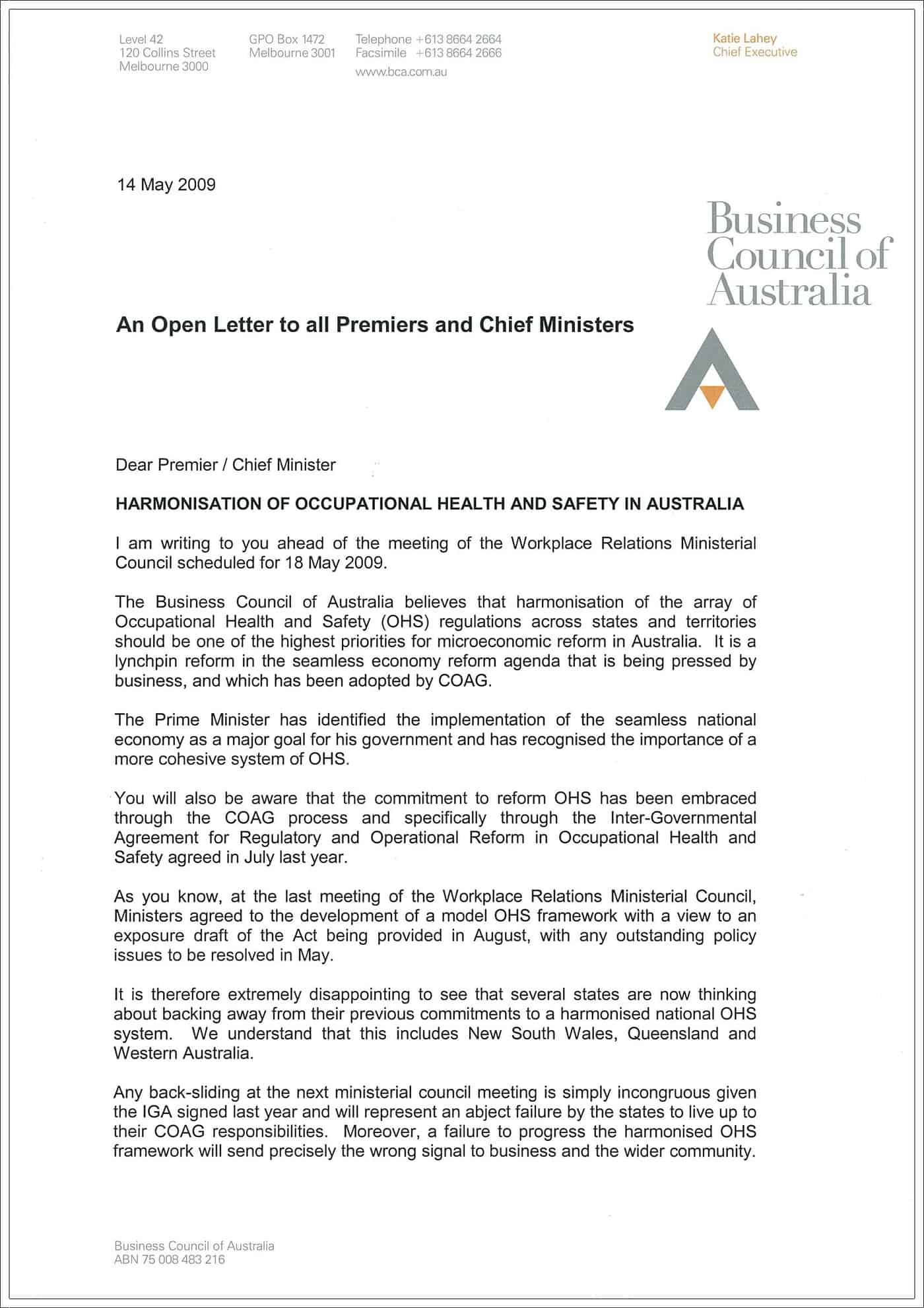The fragility of Australia’s agreement for OHS harmonisation is illustrated in an article by Michael Stutchbury of The Australian. He mentions the potential domino effect resulting from the West Australian Treasurer’s desire to keep his options open. New South Wales and Queensland see that a (politically unpalatable) out is possible.
 The freshest information in his article was that the CEO of the Business Council of Australia (BCA), Katie Lahey, has described OHS harmonisation as “linchpin” in the government’s push for a seamless national business economy, according to Stutchbury. This perspective is one that should be watched closely as the BCA is not renowned for its OHS innovation or advice.
The freshest information in his article was that the CEO of the Business Council of Australia (BCA), Katie Lahey, has described OHS harmonisation as “linchpin” in the government’s push for a seamless national business economy, according to Stutchbury. This perspective is one that should be watched closely as the BCA is not renowned for its OHS innovation or advice.
Stutchbury misinterprets the pledge by the Construction, Forestry Mining and Energy Union (CFMEU)
“to make safety the key to their battle against the ABCC’s powers”.
The union is applying safety to their industrial relations battle with the ABCC because their initial attack failed. The Government has watered down the ABCC’s powers but the ABCC will continue to exist. Indeed the “lawlessness” of the unions has caused the Government to continue with regulatory oversight of the construction industry beyond the ABCC. The unions are flogging a dead horse (albeit for excellent ideological reasons) and, as a result, are reinforcing the political and community perspectives of union “thuggery”.
The ABCC action against unions has not been on the basis of health and safety, as far as SafetyAtWorkBlog is aware. It has been on the issue of union conduct, the way the union progresses on OHS matters. The ABCC concerns stem from the process itself and not the origin of the process.
The Australian union movement needs to realise that it is its heavy-handedness on industrial relations that is impeding its progress on several fronts. It is not getting the ear of what traditionally has been a sympathetic political party and it is failing to gain any ground in the community because of its brash conduct. As a result it is not attracting new members.
It is also disappointing that health and safety is trotted out as a Plan B. This has happened repeatedly and has resulted in the tactic being seen as minimally effective. The union movement needs to see that OHS is a core value of union membership. Workers can be confident that an OHS issue brought to management with the union’s support will get an audience, and is more likely to get fixed.
The unions will gain new members by emphasising the positive and direct benefits of union membership. A possible campaign start could be
“You will be safer at work with a union”.
There is a place for ideological protest. The point needs to be made that the powers of ABCC are inappropriate. But the ABCC was introduced in response to union arrogance and excessive testosterone. A change of culture in the union movement some time ago would have allowed it to focus on the future of its members rather than continue with its outdated and unpopular belligerence.

![Media -0x1.8b5ce0p-63lert- 52392336nal[1] - crime Media -0x1.8b5ce0p-63lert- 52392336nal[1] - crime](http://safetyatworkblog.files.wordpress.com/2009/06/media-0x1-8b5ce0p-63lert-52392336nal1-crime.jpg?w=191)